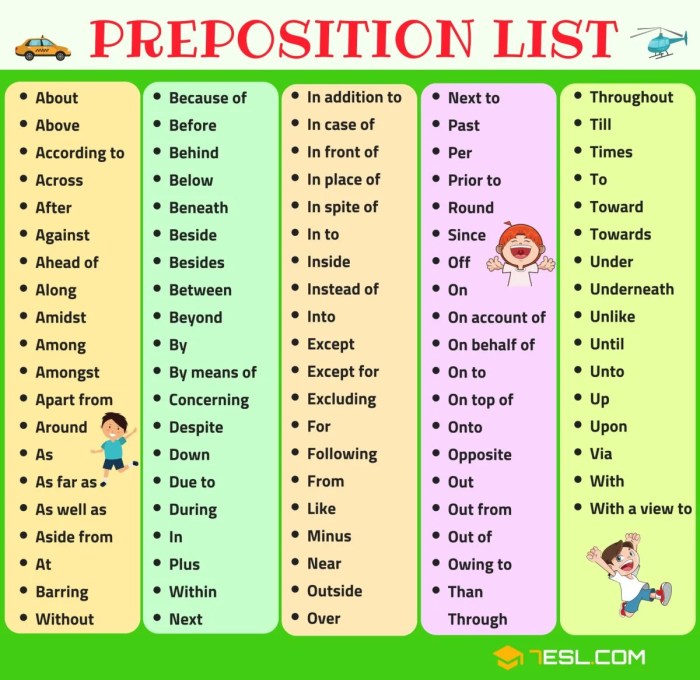Completa estas oraciones con las preposiciones y los pronombres apropiados. – Complete these sentences with the correct prepositions and pronouns:Embark on a linguistic journey to master the art of using prepositions and pronouns in Spanish, enhancing your communication skills and expanding your understanding of this vibrant language.
This comprehensive guide delves into the intricacies of Spanish prepositions and pronouns, providing a clear understanding of their usage and placement within sentences. Through engaging examples, practice exercises, and cultural considerations, you will gain a deep comprehension of these essential grammatical elements, enabling you to communicate effectively and confidently in Spanish.
Spanish Prepositions and Pronouns

In Spanish, prepositions and pronouns play crucial roles in constructing grammatically correct sentences. This article provides an overview of these grammatical elements, explaining their concepts, usage, and placement.
Grammatical Overview
Prepositionsare words that connect nouns or pronouns to other words in a sentence, indicating their relationship to each other. Common prepositions include de(of), a(to), por(by), and con(with).
Pronounsare words that replace nouns or noun phrases, referring to specific individuals or objects. Examples include yo(I), tú(you), él(he), and ella(she).
Usage and Placement
Prepositions are placed before nouns or pronouns, while pronouns typically come before verbs. The correct usage of prepositions depends on the verb or noun they are associated with.
For example, the preposition ais used before nouns indicating destination, while deis used before nouns indicating possession.
Contextual Examples
| Original Sentence | Missing Preposition | Missing Pronoun | Completed Sentence |
|---|---|---|---|
| El libro es _____ Juan. | de | El libro es de Juan. | |
| Voy _____ la escuela. | a | Voy a la escuela. | |
| Habla _____ nosotros. | con | Habla con nosotros. |
Practice Exercises
- Fill in the missing preposition in the following sentence: “El avión vuela _____ Nueva York.”
- Replace the noun phrase “el coche rojo” with the appropriate pronoun in the sentence: “El coche rojo está estacionado en la calle.”
- Correct the preposition usage in the sentence: “Voy por la tienda.”
Answer Key: 1. a, 2. Él, 3. a
Cultural Considerations, Completa estas oraciones con las preposiciones y los pronombres apropiados.
Preposition and pronoun usage may vary across different Spanish-speaking regions due to cultural nuances. For instance, in some regions, the preposition para(for) is used instead of por(by) to indicate purpose.
Understanding these variations is essential for effective communication and comprehension in different Spanish-speaking contexts.
Popular Questions: Completa Estas Oraciones Con Las Preposiciones Y Los Pronombres Apropiados.
What are the most common prepositions in Spanish?
Some of the most frequently used prepositions in Spanish include “a” (to), “de” (of), “en” (in), “por” (by), and “para” (for).
How do I know which preposition to use?
The choice of preposition often depends on the verb or noun it is used with. For example, “a” is typically used before a direct object, while “de” is used to indicate possession or origin.
What are the different types of pronouns in Spanish?
Spanish pronouns can be classified into several types, including personal pronouns (e.g., yo, tú), possessive pronouns (e.g., mío, tuyo), and demonstrative pronouns (e.g., este, ese).
